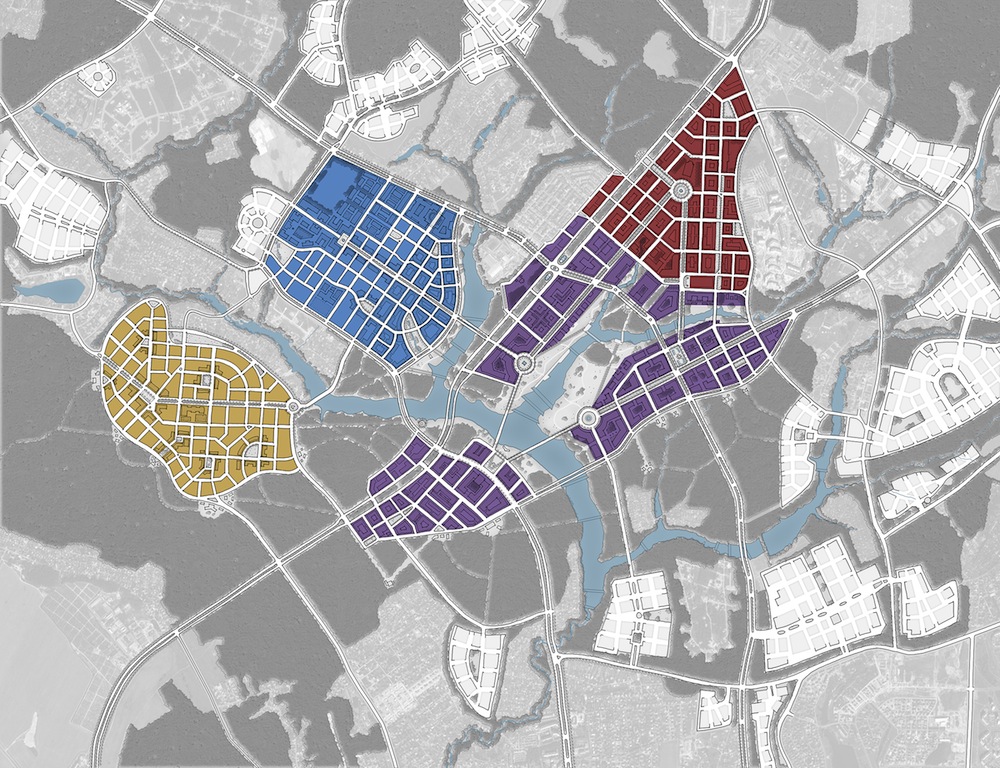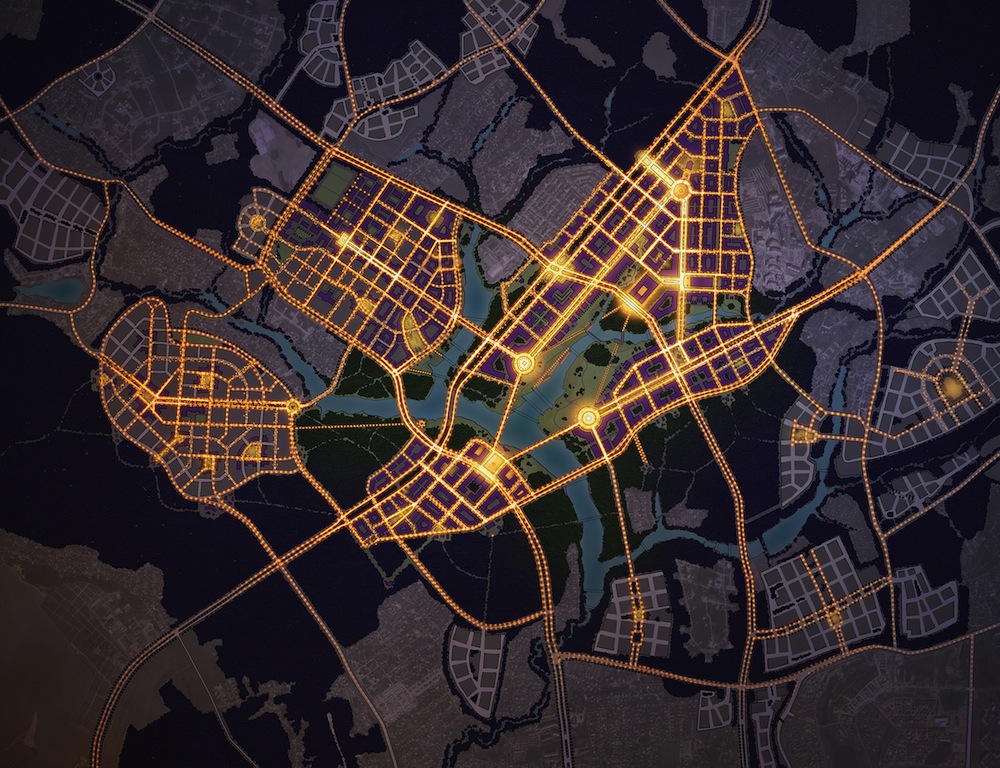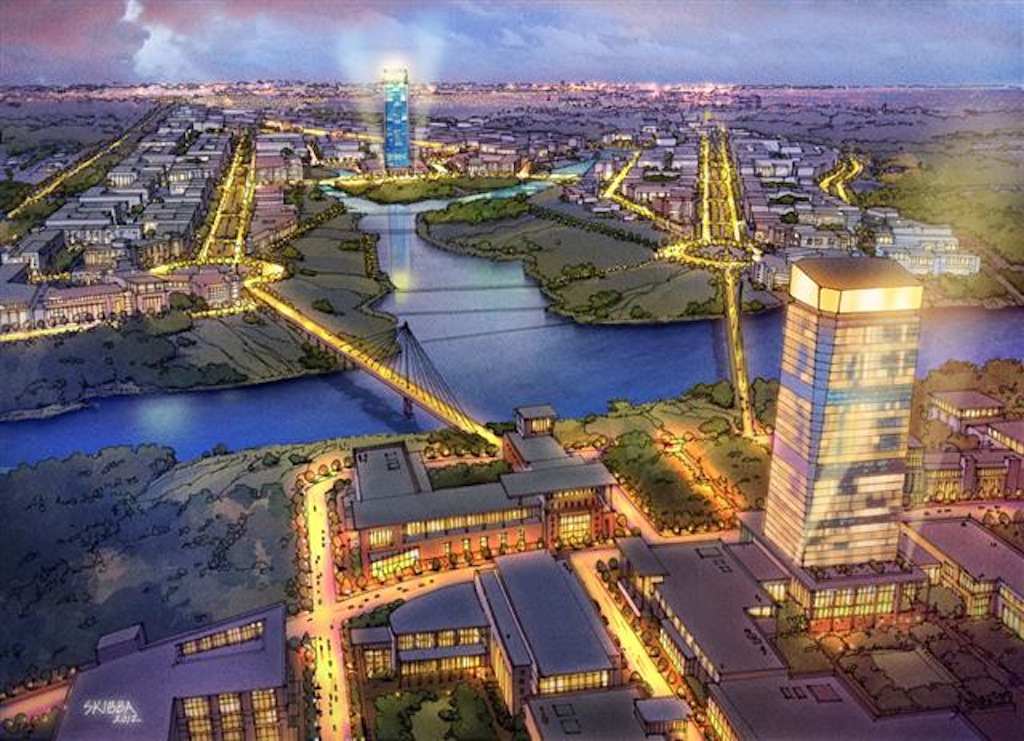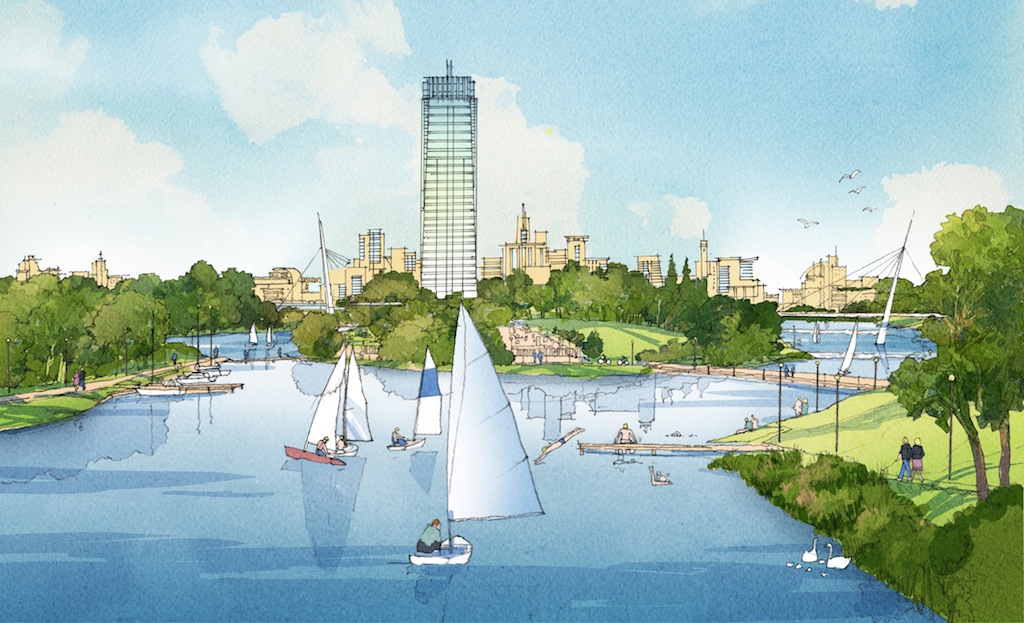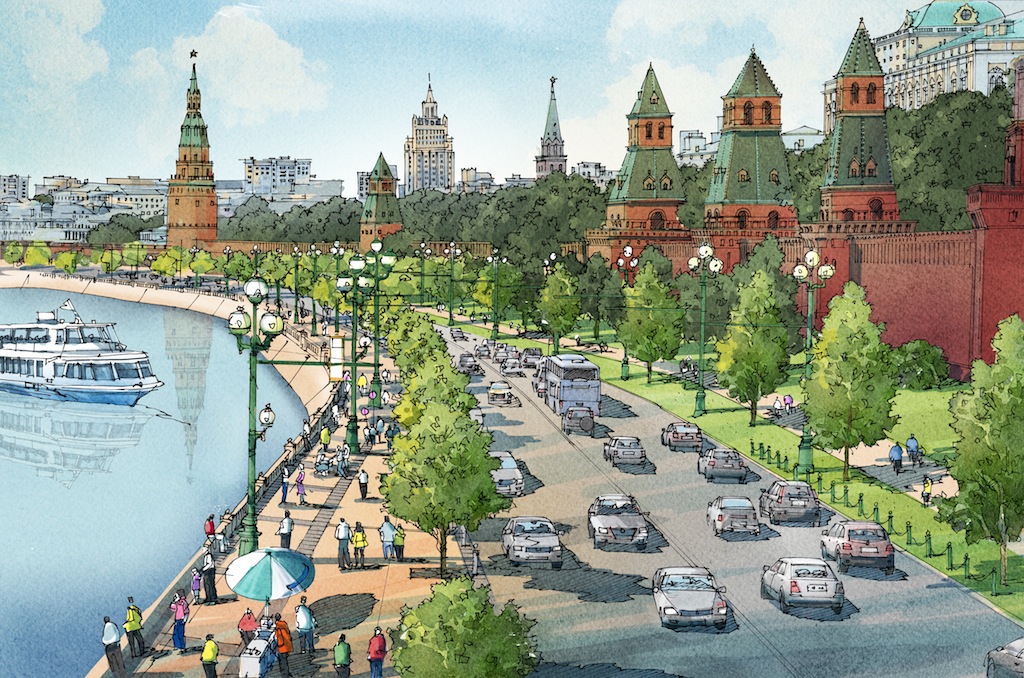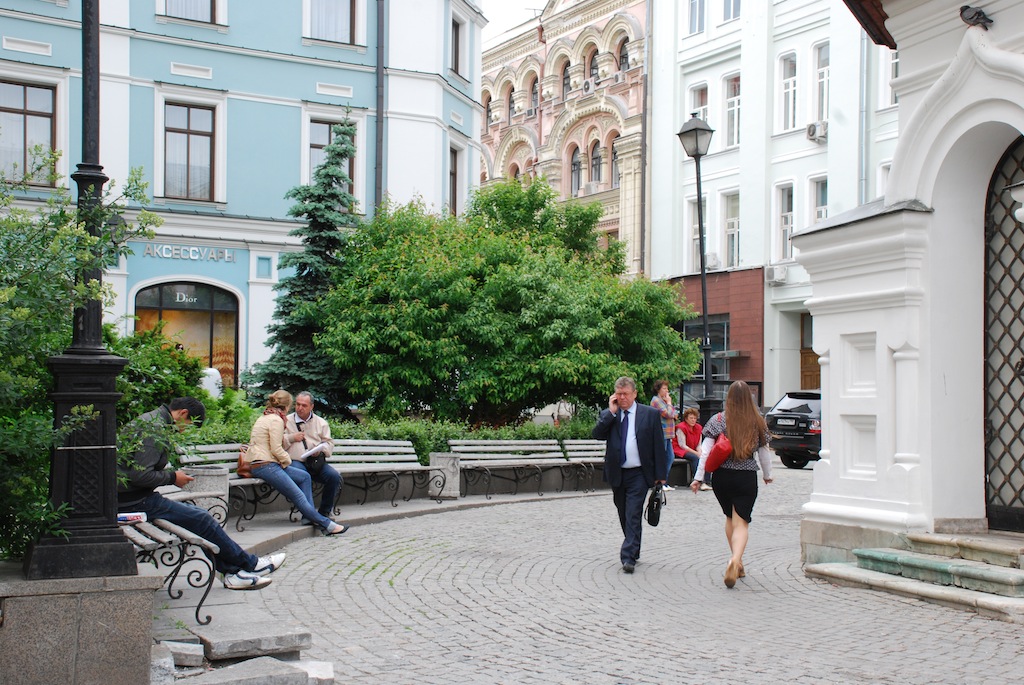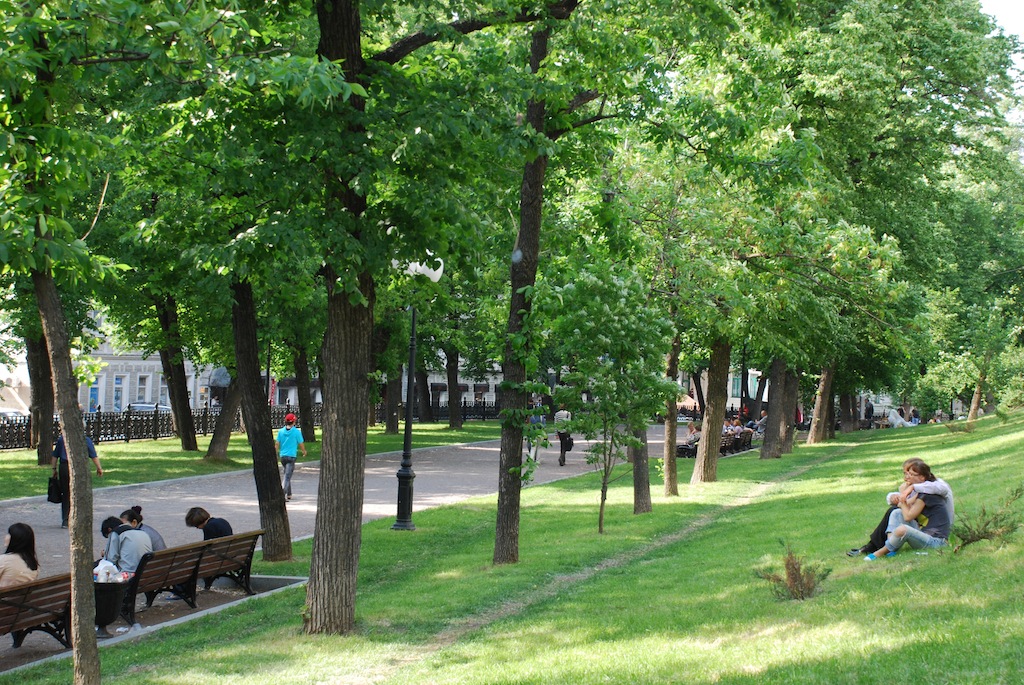Moscow DNA
Many of the issues that we face in our own cities are mirrored in the evolution of Moscow in the last couple of decades. The rapid increase in personal wealth and automobile ownership has facilitated middle class flight to the outer suburbs; this has created a staggering traffic problem that repeats itself daily. The jobs however are located in the center city with relatively few jobs in the outer rings of the metropolitan area. To make matters worse, Moscow’s famed metro system, built in the 1930s and 40s, is already over capacity handling some 8 million passengers a day. The resulting pattern is one we are all too familiar with in places like the Washington, Atlanta or Los Angeles – unrelenting congestion for much of the day and night.
So, what to do? Government officials decided to take a bold path to address the problems creating unsustainable conditions within the city – Move the capital to the suburbs!
In 2011, Russian officials announced a plan to decongest the city, address quality of life issues and improve global competitiveness. Moscow consistently ranks well behind the major global cities like London, New York, and Hong Kong in multiple categories such as business activity, human capital, culture, and political activity. Russia is focused on how best to compete for market share and global recognition by addressing the serious issues confronting the major business and political impediments as well as the efficiency and ease of navigating in and around the city.
In February 2012, the city began a three stage competition with ten teams of urbanists from around the world. The teams worked with officials to develop the three scales of planning for the big move of the Federal government to the annexed land southwest of the city. The additional land area, which looks like the tail of a comet, will more than double the current land area of the city the competition was modeled after the Grand Paris Competition in 2008 that considered bold new additions to the Paris metropolis. Advisors and experts from Europe and Russia were brought in to jury the competition and contribute to the discussion among the competitors.
The competition lasted six months and progressed through three distinct stages. The first stage addressed the metropolitan patterns of the burgeoning Moscow region – a rapidly growing city of 13 million in a region of 20 million. The second addressed the “Big Moscow” – how to master plan the annexation of an area in a way that creates synergy, not competition, between the old and the new. The third stage addressed the question of a new federal district – one that could seamlessly accommodate the Duma (Russia’s Congress) and the many federal agencies as the backbone of a vibrant new urban center connected to the rest of the city.
The UDA led team operated under a single identity for the competition – The Capital Cities Planning Group (CCPG) – and included the following firms:
Urban Design Associates – U.S. (Urban Design and Master Planning)Beasley and Associates – Canada (Strategic Planning)Gillespies –UK (Environmental Planning)John Thompson & Partners – UK (Urban Design and Master Planning)Nelson/Nygaard Consulting Associates – U.S. (Transportation Planning)Buro Happold Ltd. – UK (Infrastructure Planning)Group Ark – Moscow (Planning)Solving Efesco – UAE (Economics)Professor Stuart Guilliver FRSE – UK (Economics)
The Capital Cities team endorsed the concept of moving government offices to the new territory as an opportunity to reposition Moscow for the future; this was in conjunction with a symmetrical effort to revitalize and reinvest in Old Moscow as the heart of a great capital city. The proposed strategy calls for investments in the historic core that preserve the quality of landmark districts and restores the humane scale of streets and parks that were once hallmarks of the city. Larry Beasley, the planner who led the Vancouver renaissance remarked, “This is not an unusual decision by any means. Many capital cities, including Washington, Ottawa and London have moved government facilities into more dispersed locations to act as economic catalysts for the city.”
For the proposed new Federal District, CCPG proposed an ecological framework as the organizing system for locating new development and infrastructure in both the expansion area and as a re-fit strategy within the old city. Natural components include existing forests, waterways, and lakes that would be enhanced as a sustainable landscape to treat water runoff, provide carbon absorption, and create a continuous parks and open space system. Proposed new urban development was organized into walkable blocks and neighborhoods clustered around a lake and reservoir system designed as a part of the green spine for the new city. Proposed infrastructure systems and development standards were oriented to implementation of a Zero Carbon strategy.
The team proposed major improvements to existing transportation system including the development of tram and metro expansion as well as a central rail and transit station adjacent to the Kremlin. This will link existing rail stations within the historic core as well as create direct connections to the city’s airports, the new Federal District and the expansion areas to the southwest. This system includes high-speed train service to destinations within the metro area as well as major cities outside the region.
CCPG produced an inventory of important urban patterns for the old city entitled Moscow DNA. The survey documents key urban spatial types, blocks, building types, parks, waterways, street types, use of color, and public art as a way to understand the unique physical qualities that are important to the character and livability of the city. The design for the new Federal District employs the basic spatial types as a catalyst for creating new urban forms.
For more information, visit Capital Cities Planning Group.
Here’s an interesting take on Moscow’s love affair with the automobile in ArchDaily.

